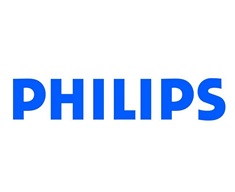 Royal Philips has announced a collaboration through which the company will integrate its suite of cardiac ambulatory monitoring and diagnostics services with Aura, the specialty diagnostics suite of leading electronic health record (EHR) company Epic.
Royal Philips has announced a collaboration through which the company will integrate its suite of cardiac ambulatory monitoring and diagnostics services with Aura, the specialty diagnostics suite of leading electronic health record (EHR) company Epic.
According to Philips, this collaboration will offer the broadest cardiac care portfolio of any single service provider integrating with Aura to date. Philips says it will deliver a “new level” of interoperability between its ambulatory monitoring technologies and Epic, helping providers enhance the diagnostic process and improve patient outcomes.
With Philips’ technology available through Aura, health system IT teams could significantly reduce the time it takes to connect with Philips, and give interested provider organisations the ability to order and review patients’ electrocardiogram (ECG) results directly in Epic. This cuts out the need for manual order and data entry, which enhances workflows for providers and streamlines data-driven care decisions, Philips also claims.
“With this collaboration, we are advancing cardiac care in a way that simultaneously improves the clinician and patient experience,” said Stefano Folli, business leader of ambulatory monitoring and diagnostics at Philips. “Together, Philips and Epic can help enable workflow efficiencies that lighten cardiac care teams’ load, so they can spend more time focusing on what matters most: providing direct patient care.”
The Philips-Epic collaboration is intended to streamline cumbersome administrative tasks by automating patient activation, staff notifications and charting, giving valuable time back to cardiology teams to spend with patients.
“When a physician prescribes a cardiac monitor, it allows patients to be evaluated for heart conditions as they go about their daily lives, even before they see a cardiologist,” said Leah Johnson, vice president of cardiology and imaging diagnostics at Epic. “Through this collaboration, we’re streamlining the clinical experience for both patients and physicians, reducing administrative overhead and ensuring that detailed diagnostic reports are readily available in the patient’s comprehensive health record.”









